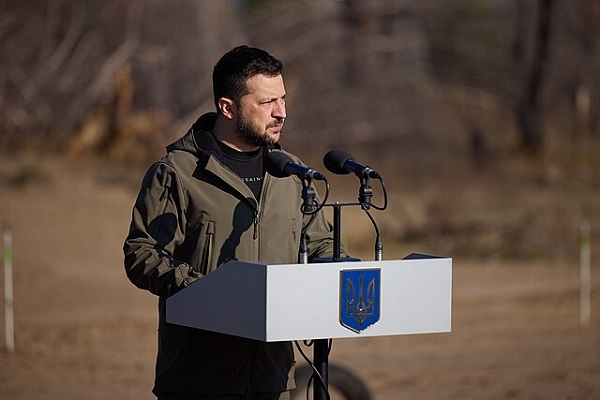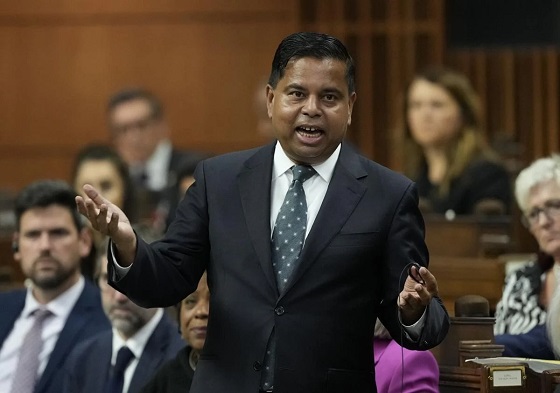conflict
Zelensky willing to “personally” meet with Putin for peace talks in Turkey

Quick Hit:
Ukrainian President Volodymyr Zelensky has signaled his willingness to meet “personally” with Russian President Vladimir Putin in Istanbul for potential peace talks, but only if Russia agrees to a full ceasefire starting Monday.
Key Details:
- Zelensky agreed to meet Putin in Istanbul next week but insists a ceasefire must start Monday.
- Trump urged Zelensky to attend talks immediately, warning delay could cost progress.
- Putin offered direct negotiations “without any preconditions,” signaling shift in tone.
Starting tomorrow, we await a ceasefire — this proposal is on the table. A full and unconditional ceasefire, one that lasts long enough to provide a necessary foundation for diplomacy, could significantly bring peace closer. Ukraine has long proposed this, our partners are… pic.twitter.com/TVpJbldfh4
— Volodymyr Zelenskyy / Володимир Зеленський (@ZelenskyyUa) May 11, 2025
Diving Deeper:
Ukrainian President Volodymyr Zelensky on Sunday publicly stated his openness to “personally” meet Russian President Vladimir Putin in Istanbul for direct peace negotiations—a potentially historic step in the conflict now stretching into its third year. However, Zelensky drew a firm line, declaring that any dialogue would hinge on Moscow agreeing to a ceasefire beginning Monday and lasting 30 days.
The offer comes after Zelensky hosted leaders from France, Germany, Poland, and the United Kingdom in Kyiv to mark the 80th anniversary of the end of World War II. In a joint statement, the leaders collectively urged a “full, unconditional ceasefire” to begin immediately, describing it as a prerequisite for serious diplomacy.
Turkish President Recep Tayyip Erdoğan has volunteered to host the summit, hoping to revive talks first attempted in Istanbul shortly after Russia’s invasion in 2022. Erdoğan has long positioned Turkey as a potential mediator in the war, balancing ties with both NATO and Moscow.
In a statement posted to X (formerly Twitter), Zelensky declared: “We await a full and lasting ceasefire, starting from tomorrow, to provide the necessary basis for diplomacy… I will be waiting for Putin in Türkiye on Thursday. Personally.”
However, President Donald Trump issued a public rebuke of Zelensky’s condition, arguing on Truth Social that the Ukrainian leader should meet Putin immediately. “President Putin of Russia doesn’t want to have a Cease Fire Agreement with Ukraine, but rather wants to meet on Thursday, in Turkey, to negotiate a possible end to the BLOODBATH,” Trump wrote. “Ukraine should agree to this, IMMEDIATELY.”
Trump’s commentary reflects a growing chorus of frustration among conservatives who believe endless delay and rigid conditions only prolong the war. “At least they will be able to determine whether or not a deal is possible,” Trump continued, adding that if peace proves elusive, the West would at least gain clarity and “can proceed accordingly.”
For his part, Putin has indicated that he is prepared to restart talks “without any preconditions,” a notable change from previous Kremlin demands that included the lifting of Western sanctions. The Russian president told state media he hoped negotiations could yield a “long-term, sustainable peace,” while accusing Ukraine of violating prior ceasefires, including those during Easter and VE Day.
Despite Putin’s claim, Ukraine has also accused Moscow of breaking those same truces by continuing strikes on civilian infrastructure. Still, the Kremlin’s willingness to talk—absent conditions—suggests a possible diplomatic opening, however narrow.
French President Emmanuel Macron echoed Zelensky’s position during his Kyiv visit: “There can be no negotiations while weapons are speaking. There can be no dialogue if, at the same time, civilians are being bombed.”
“Zelensky” by The Presidential Office of Ukraine, licensed by CC BY-SA 4.0.
Artificial Intelligence
AI Drone ‘Swarms’ Unleashed On Ukraine Battlefields, Marking New Era Of Warfare


From the Daily Caller News Foundation
Artificial intelligence-powered drones are making their first appearances on the battlefield in the Russia-Ukraine war as warfare creeps closer to full automation.
In bombardments on Russian targets in the past year, Ukrainian drones acting in concert were able to independently determine where to strike without human input.
It’s the first battlefield use of AI “swarm” technology in a real-world environment, a senior Ukrainian official and Swarmer, the company who makes the software, told the Wall Street Journal in a Tuesday report. While drones have increasingly defined modern battlefields, swarms until now had been confined to testing rather than combat.
“You set the target and the drones do the rest,” Swarmer Chief Executive Serhii Kupriienko told the WSJ. “They work together, they adapt.”
So far, the Swarmer technology has been used hundreds of times to target Russia assets, but was first used a year ago to lay mines on the front, the Ukrainian official told the WSJ. The software has been tested with up to 25 drones at once, but is usually utilized with only three.
Kupriienko told the WSJ that he was preparing to test up to 100 drones at once with the linking software.
A common arrangement used on the battlefield includes one reconnaissance drone to scout out the target and two explosive drones delivering the payload on target, the official told the WSJ.
While Western nations such as the U.S., France and the United Kingdom are also pursuing drone swarm technology, they have not deployed swarm technology on the battlefield the way Ukraine has, according to the WSJ. Currently, autonomous weapons are not regulated by any international authority or binding agreement, but ethical concerns around the technology has led many to call for increased regulation of weapons like the Swarmer system.
The Ukrainian Ministry of Foreign Affairs did not immediately respond to the Daily Caller News Foundation’s request for comment.
conflict
Trump Pentagon Reportedly Blocking Ukraine From Firing Western Missiles Deep Into Russia


From the Daily Caller News Foundation
The Department of Defense has spent months blocking the Ukrainian military from using American and British-made missiles to hit targets deep inside Russia, The Wall Street Journal reported Sunday, citing unnamed U.S. officials.
Undersecretary of Defense for Policy Eldridge Colby reportedly designed the procedure to review requests to carry out the long-range strikes with weapons that are either of U.S. origin or that require American intelligence or use components provided by the U.S., according to the WSJ. Secretary of Defense Pete Hegseth reportedly has the final say on whether Ukrainian forces can use the MGM-140 ATACMS (Army Tactical Missile System) to hit targets in Russia.
The reported blocks on missile strikes coincides with a Trump administration effort to broker a peace deal between Russia and Ukraine. A Pentagon spokesperson declined to comment further on the matter.
BREAKING: President Vladimir Putin reacts to B-2 Flyover pic.twitter.com/1mzVn7DxlW
— Jack Poso 🇺🇸 (@JackPosobiec) August 15, 2025
The Biden administration allowed Ukraine to carry out strikes with ATACMS in November, weeks after President Donald Trump won the 2024 election, the New York Times reported. Trump criticized the move during a December interview with Time magazine.
“It’s crazy what’s taking place. It’s crazy,” Trump said. “I disagree very vehemently with sending missiles hundreds of miles into Russia. Why are we doing that? We’re just escalating this war and making it worse. That should not have been allowed to be done.”
Trump and Russian President Vladimir Putin met in Alaska on Aug. 15 for a summit meeting during which Trump sought to secure a cease-fire in Russia’s war with Ukraine. As Trump greeted Putin, a B-2A Spirit stealth bomber and several fighters carried out a flyover of Elmendorf Air Force Base.
Trump met with Ukrainian President Volodymyr Zelensky and major European leaders on Aug. 18 to update them on the summit.
In July, Trump reached an agreement with NATO where members of the alliance would purchase weapons, including MIM-104 Patriot surface-to-air missiles, and donate them to Ukraine.
-

 Business2 days ago
Business2 days agoBill C-8 would allow minister to secretly cut off phone, Internet service
-

 Automotive2 days ago
Automotive2 days agoAmerica’s Troubled EV Industry Loses Its Subsidized Advantage – Now What?
-

 Fraser Institute2 days ago
Fraser Institute2 days agoCarney government should scrap gun ‘buyback’ program and save taxpayer money
-

 Censorship Industrial Complex2 days ago
Censorship Industrial Complex2 days agoWhen Did Traditional Values Become Hate Speech?
-

 Crime2 days ago
Crime2 days agoDrug trafficker says Trump battle with the cartels is making an impact
-

 Business15 hours ago
Business15 hours agoLA skyscrapers for homeless could cost federal taxpayers over $1 billion
-

 Alberta16 hours ago
Alberta16 hours agoAlberta’s E3 Lithium delivers first battery-grade lithium carbonate
-

 Artificial Intelligence15 hours ago
Artificial Intelligence15 hours agoAI chatbots a child safety risk, parental groups report







